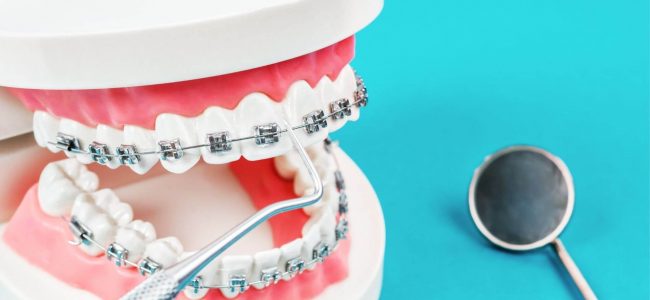Are Braces Painful?
You hear the word “braces” and immediately those childhood memories come flooding back…. nicknames like metal-mouth, train tracks, and brace face. You think back to the alignment process – when spacers, brackets, and wires became household terms. These fond and not-so-fond memories are not unusual. Approximately four million people in the United States are wearing braces at any one time.
And, whether you had braces as a kid, or contemplating orthodontic treatment as an adult, there is good news…braces have come a long way! According to the FDA, braces have evolved over the years and new alternatives in both look and materials are available. They say, “If metal braces will do the job the best, know that many metal braces today are smaller than they used to be, less obtrusive, and can be clear or colored to match the color of your teeth. In addition, you may know there are now clear braces (called aligners), such as Invisalign, that are nearly invisible. These tend to cost a little more than metal ones do, and they don’t work for everyone’s teeth, but you can ask the orthodontist if they are an alternative for you.”
A commonly asked question before receiving orthodontic treatment is, does it hurt?
Placement of Braces
The procedure of having braces put on should not be super painful (taking into account that everyone’s pain tolerance varies). The American Dental Associations says, “Although a little discomfort is expected during treatment, today’s braces are more comfortable than in the past. Newer materials apply a constant, gentle force to move teeth and usually require fewer adjustments.”
Foods to Eat
Soon after getting braces, you should be able to return to normalcy. The only caveat is to stick to softer foods for a few days. The ADA says because of sore teeth, try eating softer foods like:
- Scrambled eggs
- Oatmeal
- Soup with soft vegetables or pureed or cream soups
- Soft cheeses, including cottage cheese
- Smoothies and milkshakes
- Pudding and custard
- Meatloaf
- Mashed potatoes
- Sorbet and frozen yogurt
- Tortillas (soften by microwaving or steaming)
- Yogurt
- Soft-cooked, shredded chicken and meat
- Protein shakes
- Tofu
- Ripe fruits, such as peaches and nectarines, cut into bite-size pieces
- Couscous, quinoa, bulgur, soft-cooked rice
- Pasta and noodles
- Polenta
- Baked apples
- Peanut butter
- Chicken or tuna salad
- Refried beans
- Avocado
- Applesauce
- Macaroni and cheese
- Pancakes
- Soft bread
- Saltines and matzoh
- Mashed bananas
- Cooked veggies
- Hummus
- Canned or cooked fruit
The ADA encourages patients to avoid foods that could get stuck in their braces or bend the wires. These foods include nuts, corn on the cob, popcorn, hard candy, ice, and sticky foods like chewing gum, caramel, or other chewy candy.
If you are interested in orthodontic treatment for yourself or your child, schedule an appointment with your dentist to discuss options. There are different types of treatment (not just braces) that can be used to correct crooked teeth and/or bite. Orthodontic treatment can deliver a beautiful smile no matter the age!
